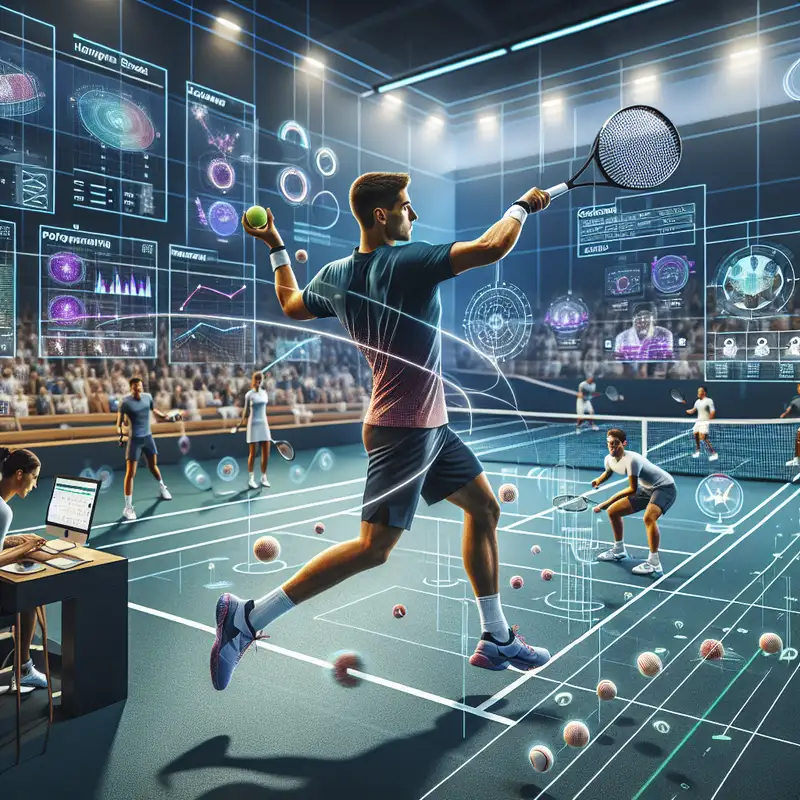The sports world is undergoing a remarkable transformation driven by data and cutting-edge technologies. From training and competition to fan engagement and monetization, Artificial Intelligence (AI) and computer vision are redefining how athletes, teams, and leagues operate. Although some purists worry that this shift could make athletes more “robotic,” many see these tools as essential for pushing athletic and strategic boundaries.
In collaboration with Sponsorlytix, The Sports Journal recently analyzed data from five major sports—Football (Premier League), American Football (NFL), Mixed Martial Arts (UFC), Basketball (NBA), and Baseball (MLB)—from 2019 to 2023. The study examined four core metrics across these sports, exploring how AI and computer vision influence performance, injury management, fan experience, and officiating.
Performance Analytics: A New Lens on Athlete Efficiency
AI and computer vision provide teams with unprecedented insights into player performance. Technologies like GPS tracking capture data on player movements, from sprint speeds and defensive positioning to fielding efficiency and base running speeds. By tracking ball and player trajectories in real time, computer vision tools provide granular analysis of shooting accuracy, passing precision, and other metrics critical to team and individual success.
These technologies empower coaches to adapt tactics on the fly, allowing them to identify weaknesses in opponents’ strategies and tailor training programs based on precise in-game data. Additionally, player biometrics in esports offer insights into players’ reaction times and movement, making training regimens more targeted and effective.
Injury Prevention and Rehabilitation: A New Standard of Care
AI-powered injury prevention and rehabilitation systems use wearable devices to track athlete biomechanics and flag movements that pose injury risks. In recovery, AI and computer vision monitor progress through physical therapy, tracking every stage of healing.
According to a study in the Journal of Sports Science & Medicine, athletes using AI-guided rehabilitation programs recovered 20% faster than those relying on traditional methods. Personalized rehabilitation plans, based on each athlete’s performance data, allow for a faster, safer return to competition, potentially extending careers and reducing long-term injury risks.
Strategic Analysis and AI-Driven Gameplay
Machine learning algorithms analyze team dynamics and tactical patterns, providing coaches and players with insights that help anticipate opponents’ moves and adapt strategies. For instance, AI can identify the best plays by analyzing patterns from past games, helping teams refine their approach and improve real-time decision-making.
Gesture recognition and player biometrics in computer vision are even enhancing esports, where players’ physical movements and reflexes are analyzed to optimize performance. These technologies enable athletes to train more strategically, identify areas for improvement, and maximize their strengths.
Enhancing the Fan Experience Through AI & Computer Vision
AI and computer vision are making sports broadcasts more engaging, offering real-time insights and enhanced visualizations. In the Premier League, the use of these technologies in broadcasts grew from 13% in 2019 to 35% in 2023, while the NFL saw an increase from 17% to 33% over the same period. AI enhances data-driven storytelling, providing fans with richer perspectives on player statistics, gameplay trends, and tactical decisions.
In football, Video Assistant Referee (VAR) has become one of the most discussed applications of computer vision. Leveraging AI algorithms and multiple camera angles, VAR enhances decision accuracy to 98%, as reported by the International Football Association Board (IFAB). Despite ongoing debates, VAR exemplifies how AI can support referees in making critical, real-time decisions that impact the fairness of the game.
Sponsorship Measurement: Precision in Brand Exposure
Computer vision is also transforming how sponsorship impact is measured. With visual recognition and logo tracking technology, brands can see exactly where and how often their logos appear during broadcasts. Advanced algorithms process visual content to quantify sponsor visibility, helping brands optimize strategies based on actual exposure and engagement metrics.
In a field where sponsorship deals are often worth millions, this level of data-driven measurement ensures that brands can assess the ROI of their investments with accuracy. As a result, sponsors are better equipped to align their strategies with audience engagement patterns.
Balancing Technology and Creativity in Sports
The increasing adoption of AI and computer vision in sports has brought transformative benefits in performance analysis, injury prevention, and fan engagement. However, some worry that these advancements could stifle creativity, pushing athletes toward a more mechanized style of play. Despite these concerns, the ongoing integration of AI across sports indicates that these tools are essential for elevating the game.
As technology continues to evolve, sports leagues will need to find ways to balance these innovations with the creative instincts that make sports so compelling. AI and computer vision are not just making sports faster and smarter—they are expanding the potential for excellence, providing athletes, teams, and fans with a richer, more immersive experience.
